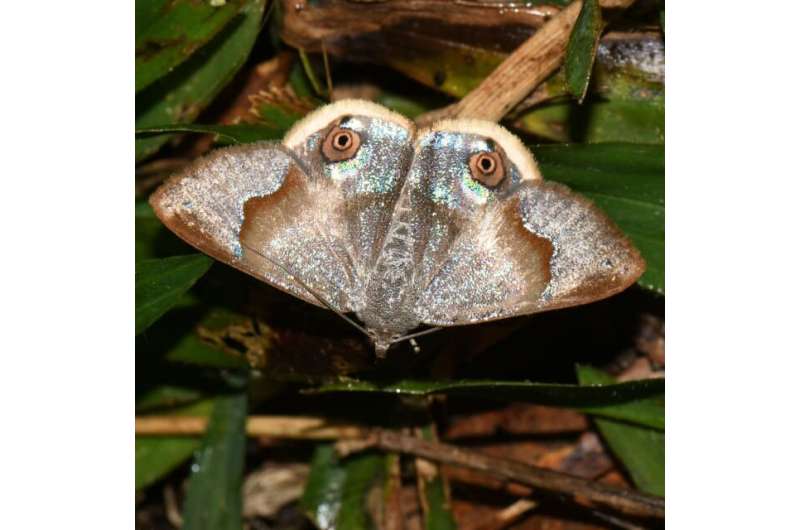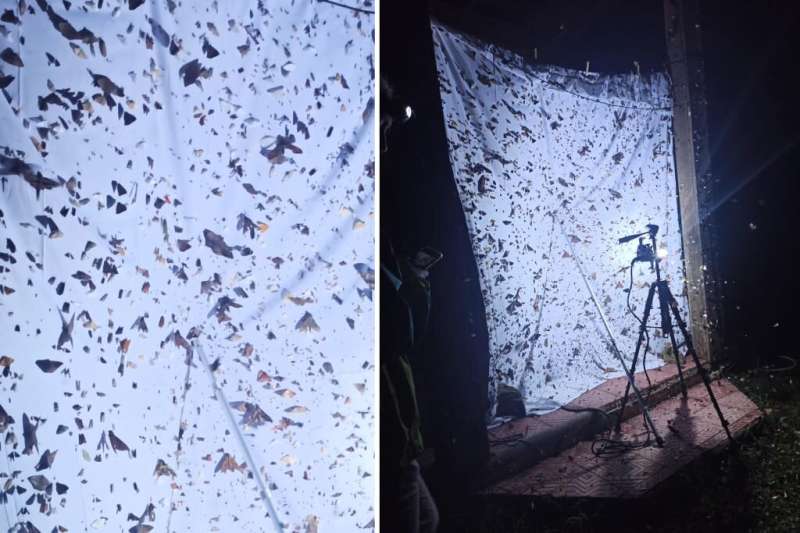It's lights out for moths, if you like your nightly pollinators

The world at night is never truly dark anymore, but rather lit up with the light of many fake suns.
Artificial lights have led to light pollution—a problem that's been documented to disrupt or interfere with the behavior of animals including migrating birds and sea turtle hatchlings. It also impacts the tiniest of insects, including those designed for dusk and darkness, in ways that aren't completely understood.
FIU associate professor of biology Jamie Theobald and Ph.D. student Yash Sondhi want to find out what all of this artificial light at night is doing to moths, one of the nighttime's most important nocturnal pollinators.
With a National Geographic grant, they will collaborate with Akito Kawahara from the University of Florida, and Huai-Ti Lin and Sam Fabian from the Imperial College London, to uncover how moths respond to different light levels at field sites in India, and determine if they are attracted to or avoid light-polluted areas.
"I've always been interested in the question of a moth's interaction with light and have worked to come up with ways to track how light affects when moths are active," Yash said. "Now, this grant will help explore these questions more closely and at a larger, environmental scale in terms of how light pollution is changing their behavior."

They will use motion capture technology, like the kind used in movies, to measure the moths' flight patterns, in collaboration with Fabian. A 3D printer will allow the researchers to print tiny capture points that can be attached to the moth's body, accurately tracking each precise moment when a moth takes flight. This will then be matched to data on lighting conditions.
Theobald, whose lab focuses on insect vision and flight, explains that insects have brains a millionth of a fraction of the size of a human brain. And although those brains are tiny, they are capable of making sophisticated decisions especially during flight. They grab and process images at a lightning-fast level, almost like a sped-up slideshow. If they come across an obstacle or something unknown, they don't panic. They make split decisions, change course and fly in another direction. In fact, the flight they perform can match or exceed those of human pilots.
But, there's no flying without vision. And there's no vision without light. So, light level is one of the biggest challenges when it comes to flight.
Moths, though, evolved to fly at dusk or in darker conditions beneath moonlight and starlight, and have great low light vision. Too much light usually creates problems.

After all, one of the most well-known ways light affects these nocturnal insects is in the common phrase like a moth to flame. It still remains somewhat of a mystery as to why moths are so attracted to light—especially since the attraction, at its worst, is usually fatal. What scientists do know is that when moths get near bright light, they basically stop being moths. They abandon their normal duties as the nightshift pollinators. They don't make time to reproduce. For the most part, they simply sit near the light source, stunned.
Sondhi has witnessed this phenomenon working in the field. Thousands of moths—all different sizes, colors and shape—congregate on a moth screen, which is lit up with UV lights and used to survey moths. The first time Sondhi saw it, he was astonished. It's what led him to the research he's doing today, trying to unravel the relationship between vision, flight and light.
The researchers emphasize light pollution is a conservation issue, and more knowledge and awareness about light pollution's impacts on insects is needed, especially since artificial light is becoming a bigger problem.
"You know, in some ways light pollution is a nice sort of problem in principle, because we could just solve it. Lighting is simple to solve… Just turn off your lights at night," Theobald said. "There's no consequences. There's actually also human health benefits associated with properly dark nights without lots of artificial lights."
Provided by Florida International University




















